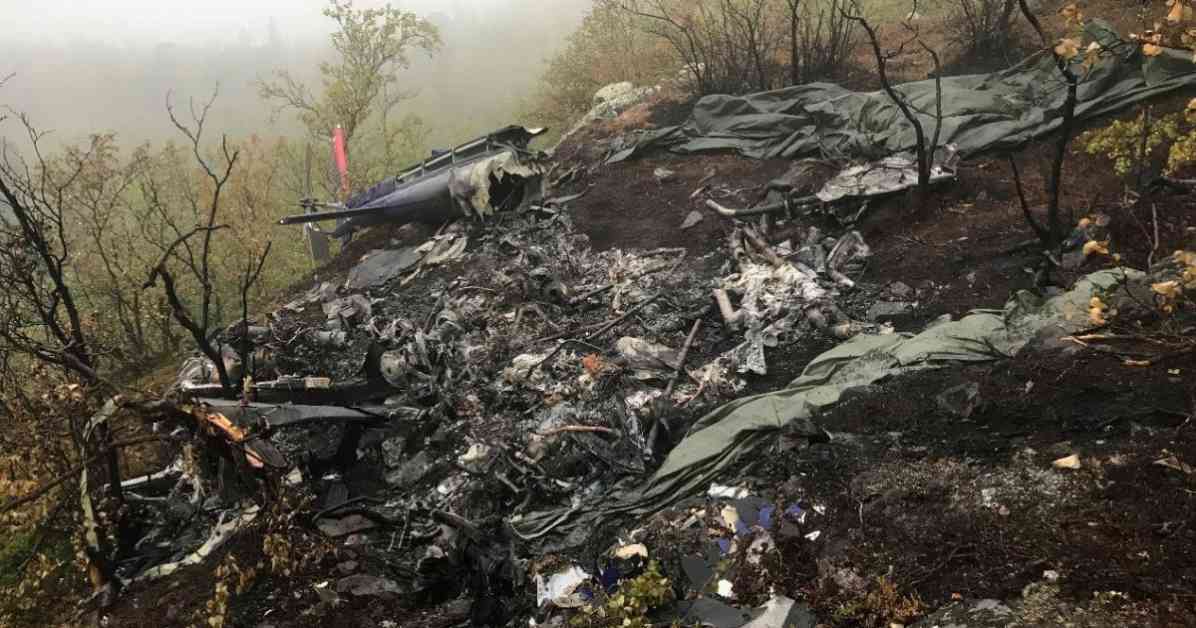Tragic Helicopter Tour Crash: Investigating the Catastrophe in Norway
The picturesque Nordic summer was coming to a close when a devastating tragedy struck in the mountains of northern Norway. On August 31, 2019, one of the country’s worst helicopter accidents occurred when an Airbus AS350 chopper crashed in the Skoddevarre mountains in Alta, Finnmark county, located in a remote part of Lapland. The crash resulted in the loss of all on board – five passengers on a helicopter tour and a pilot – when the helicopter’s rotors inexplicably locked up mid-air, causing it to plummet into the mountainside and burst into flames. The question on everyone’s mind was: what went wrong?
Grim Ending to a Music Festival
The chopper crash had a profound impact on the annual Høstsprell festival, whose guests were aboard the ill-fated helicopter for a sightseeing tour over majestic Alta. The day of the crash began with a routine safety inspection of the helicopter at lunchtime before it took off with its first group of tourists. Shortly before 5pm, the same pilot embarked on another journey with a second group of passengers. The weather conditions at the time were reported to be clear and favorable for flying. As the chopper approached the Skoddevarre mountains, passengers sent Snapchats to friends, only for the helicopter to suddenly disappear from flight radars. The last recorded coordinates of the helicopter were at 5:08pm on the Flightradar24 website. While no witnesses saw the crash itself, a bystander alerted the airfield loadmaster upon spotting plumes of smoke. Emergency services were promptly notified when the helicopter’s emergency position radiobeacon activated.
Miraculously, rescue teams discovered a survivor approximately 164 feet away from the destroyed aircraft. Although conscious and able to speak, the survivor was unable to provide details on how the crash occurred. Tragically, the survivor succumbed to their injuries overnight at the hospital. Four other victims were pronounced dead at the crash site, with one missing victim found deceased hours later. The aftermath of the crash left the mountainside engulfed in flames, with the entire frame of the chopper destroyed, including all electronic devices.
Investigating the Cause of the Crash
In the wake of the tragic incident, an investigation was launched, which included a team from the manufacturer Airbus to determine what led to the catastrophic crash. The severe damage to the flight recorder hindered investigative efforts, prompting authorities to rely on other evidence to piece together the events leading to the crash. Analysis of a Snapchat video clip taken moments before the crash failed to provide any significant clues about the cause of the accident. Finally, in 2022, aviation safety authorities released their report, citing servo transparency as the most probable cause of the crash. Servo transparency occurs when the stress on the rotor surpasses the hydraulic servomotor’s capacity, resulting in stiffening and difficulty in controlling the flight. Factors such as high speeds, mass, and altitude can contribute to this fatal phenomenon, with 11 previous accidents linked to it, according to the Norwegian Safety Investigation Authority (NSIA).
Helicopter Crashes in Norway
Norway, known for being one of the world’s top oil producers, has unfortunately witnessed several helicopter tragedies over the years. In 2016, commercial flights utilizing Airbus Super Puma aircraft were grounded following a fatal crash in which 13 individuals, including a British national, lost their lives after the helicopter plunged into the sea. The flight was en route from an oil platform in the North Sea when the tragic incident occurred. More recently, in another incident, one person perished and five others sustained injuries when a Sikorsky S-92 helicopter crashed into the North Sea near Bergen.
The investigation into the Skoddevarre crash suggested that the pilot had nearly regained control before running out of altitude, ultimately crashing into the mountainside. Authorities noted that the relatively low impact of the crash indicated that the victims may have had a higher chance of survival if the wreckage had not caught fire. In response to safety concerns, Airbus implemented crash-resistant fuel systems in all new AS350 helicopters and strongly advised operators to retrofit older models with this safety feature. However, the crashed helicopter had not undergone the retrofitting process, as it would have incurred a cost of €35,000, as reported by local Alta Posten.
The NSIA remarked that the victims likely could have survived if the fire had not erupted immediately following the crash. All the passengers onboard were young adults from the local Alta area, aged between 19 and 22. In the aftermath of the tragedy, political parties in the region opted to postpone campaigning for the upcoming local elections as a sign of respect until the victims’ funerals had taken place, as reported by the Finnmark Dagblad. The music festival canceled all scheduled events, but attendees were permitted to gather at the site to pay tribute to the victims.
Investigations into aviation accidents are complex and often require meticulous examination of various factors to determine the root cause. The tragic helicopter crash in the Skoddevarre mountains serves as a somber reminder of the risks associated with air travel and the importance of stringent safety measures to prevent such devastating incidents in the future. As authorities continue to analyze the circumstances surrounding the crash, the families and loved ones of the victims mourn their loss, while the aviation industry strives to enhance safety protocols to prevent similar tragedies from occurring.












